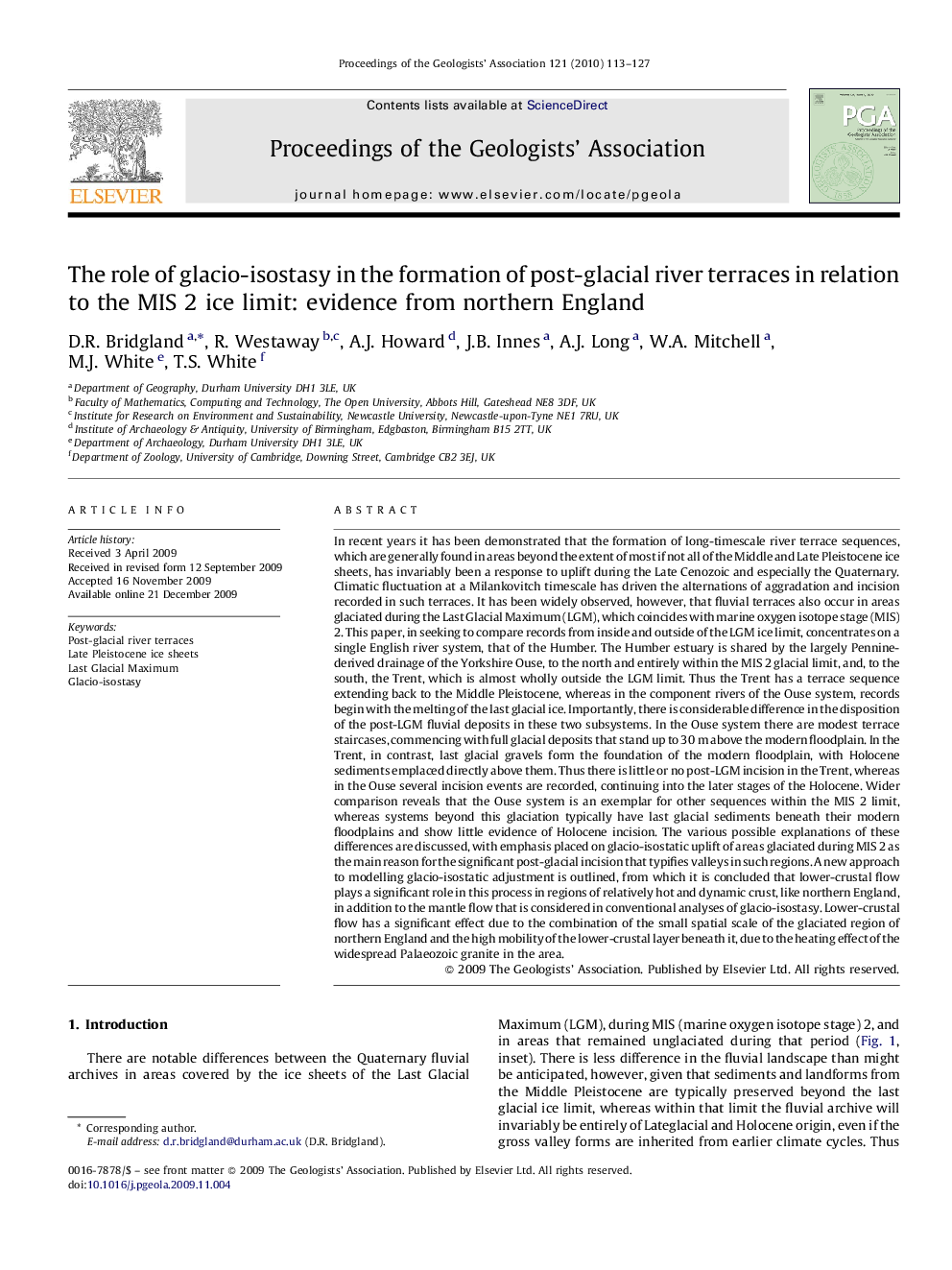| کد مقاله | کد نشریه | سال انتشار | مقاله انگلیسی | نسخه تمام متن |
|---|---|---|---|---|
| 4735177 | 1640673 | 2010 | 15 صفحه PDF | دانلود رایگان |
عنوان انگلیسی مقاله ISI
The role of glacio-isostasy in the formation of post-glacial river terraces in relation to the MIS 2 ice limit: evidence from northern England
دانلود مقاله + سفارش ترجمه
دانلود مقاله ISI انگلیسی
رایگان برای ایرانیان
موضوعات مرتبط
مهندسی و علوم پایه
علوم زمین و سیارات
زمین شناسی
پیش نمایش صفحه اول مقاله

چکیده انگلیسی
In recent years it has been demonstrated that the formation of long-timescale river terrace sequences, which are generally found in areas beyond the extent of most if not all of the Middle and Late Pleistocene ice sheets, has invariably been a response to uplift during the Late Cenozoic and especially the Quaternary. Climatic fluctuation at a Milankovitch timescale has driven the alternations of aggradation and incision recorded in such terraces. It has been widely observed, however, that fluvial terraces also occur in areas glaciated during the Last Glacial Maximum (LGM), which coincides with marine oxygen isotope stage (MIS) 2. This paper, in seeking to compare records from inside and outside of the LGM ice limit, concentrates on a single English river system, that of the Humber. The Humber estuary is shared by the largely Pennine-derived drainage of the Yorkshire Ouse, to the north and entirely within the MIS 2 glacial limit, and, to the south, the Trent, which is almost wholly outside the LGM limit. Thus the Trent has a terrace sequence extending back to the Middle Pleistocene, whereas in the component rivers of the Ouse system, records begin with the melting of the last glacial ice. Importantly, there is considerable difference in the disposition of the post-LGM fluvial deposits in these two subsystems. In the Ouse system there are modest terrace staircases, commencing with full glacial deposits that stand up to 30Â m above the modern floodplain. In the Trent, in contrast, last glacial gravels form the foundation of the modern floodplain, with Holocene sediments emplaced directly above them. Thus there is little or no post-LGM incision in the Trent, whereas in the Ouse several incision events are recorded, continuing into the later stages of the Holocene. Wider comparison reveals that the Ouse system is an exemplar for other sequences within the MIS 2 limit, whereas systems beyond this glaciation typically have last glacial sediments beneath their modern floodplains and show little evidence of Holocene incision. The various possible explanations of these differences are discussed, with emphasis placed on glacio-isostatic uplift of areas glaciated during MIS 2 as the main reason for the significant post-glacial incision that typifies valleys in such regions. A new approach to modelling glacio-isostatic adjustment is outlined, from which it is concluded that lower-crustal flow plays a significant role in this process in regions of relatively hot and dynamic crust, like northern England, in addition to the mantle flow that is considered in conventional analyses of glacio-isostasy. Lower-crustal flow has a significant effect due to the combination of the small spatial scale of the glaciated region of northern England and the high mobility of the lower-crustal layer beneath it, due to the heating effect of the widespread Palaeozoic granite in the area.
ناشر
Database: Elsevier - ScienceDirect (ساینس دایرکت)
Journal: Proceedings of the Geologists' Association - Volume 121, Issue 2, 2010, Pages 113-127
Journal: Proceedings of the Geologists' Association - Volume 121, Issue 2, 2010, Pages 113-127
نویسندگان
D.R. Bridgland, R. Westaway, A.J. Howard, J.B. Innes, A.J. Long, W.A. Mitchell, M.J. White, T.S. White,